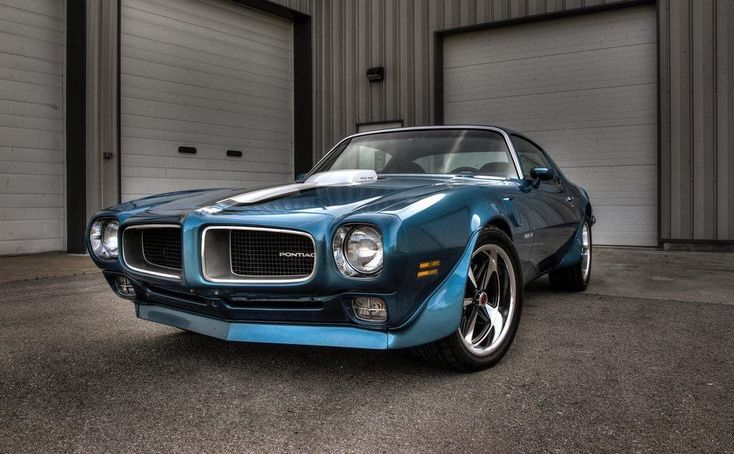In the realm of American muscle cars, few names evoke as much nostalgia, power, and style as the Pontiac Trans Am. This iconic automobile, part of Pontiac’s storied history, left an indelible mark on the automotive world. From its inception in the 1960s to its evolution through the years, the Trans Am has been a symbol of American automotive excellence. In this article, we will take an in-depth journey through the history, design, and enduring legacy of the Pontiac Trans Am.
The Birth of a Legend
In 1969, Pontiac introduced the Trans Am as a performance version of the Pontiac Firebird, which, in turn, was a pony car designed to compete with the Ford Mustang and Chevrolet Camaro. Pontiac, a division of General Motors, aimed to create a distinct and powerful car that would stand out in the muscle car arena.
The Trans-American Championship racing series inspired the name and logo of the Trans Am, emphasizing its performance-oriented identity. It came equipped with a V8 engine, enhanced suspension, and unique styling elements that set it apart from the standard Firebird. The Trans Am quickly earned a reputation for its raw power and aggressive styling.
Muscle and Power
One of the defining features of the Pontiac was its impressive powertrain. Over the years, it featured various V8 engine options, each delivering robust performance and a distinctive exhaust note that echoed the car’s muscle car heritage. The combination of big displacement engines and rear-wheel drive turned the Trans Am into a force to be reckoned with on the drag strip and open road.
Throughout its history, the Trans Am saw several high-performance engine iterations, with horsepower and torque figures that pushed the boundaries of what American muscle cars could achieve. The Trans Am was not just a car; it was an embodiment of the American muscle car dream.
Iconic Design and Styling
The Trans Am’s design was nothing short of iconic. One of its most recognizable features was the shaker hood scoop, which protruded through the hood and moved with the engine’s vibrations. This distinctive design element became a hallmark of the Trans Am’s identity.
Another iconic feature was the bold Firebird decal on the hood, often referred to as the “screaming chicken” due to its dynamic appearance. The Trans Am’s aggressive stance, flared wheel arches, and distinctive front and rear fascias gave it a menacing and aerodynamic look.
Inside, the Trans Am had a driver-centric cockpit with a sporty and functional layout. Bucket seats, a center console, and a unique steering wheel added to the car’s performance-oriented appeal. The designers intended the Trans Am to provide an exhilarating driving experience on both the track and the street.
Trans Am in Popular Culture
The car achieved pop culture fame, thanks in large part to its prominent role in the 1977 film “Smokey and the Bandit.” In the movie, the charismatic Burt Reynolds, who portrayed the Bandit, drove a black Trans Am. This film catapulted the car to new heights of fame and cemented its status as an American icon.
The Trans Am’s appearance in “Smokey and the Bandit” generated a surge in demand, and sales of the car skyrocketed. The black and gold Trans Am, complete with the iconic Firebird decal on the hood, became an enduring symbol of automotive coolness and rebellion.
Evolution of the Trans Am
Over the years, the Trans Am underwent several redesigns and updates to keep up with changing automotive trends and regulations. In the 1970s and 1980s, it faced challenges such as stricter emissions standards and fuel efficiency requirements. These changes led to modifications in engine options and the car’s overall design.
In the late 1980s and early 1990s, the Trans Am underwent a transformation. Adopting a more aerodynamic and modern look while shedding some of its boxy contours for a sleeker appearance. The performance-oriented WS6 package, introduced in the late 1990s, further solidified the Trans Am’s reputation as a potent muscle car.
However, like many muscle cars of the era, the Trans Am faced a decline in sales during the 2000s. In 2002, Pontiac temporarily discontinued the model.
Enduring Legacy
Although the Pontiac brand is no longer in existence, the Trans Am’s legacy lives on. Enthusiasts and collectors continue to cherish the classic Trans Am models, restoring and preserving them for future generations. The car’s enduring popularity is evident in the numerous Trans Am clubs, forums, and events that celebrate its rich history.
In recent years, companies like Trans Am Depot have taken up the mantle, producing modern interpretations of the classic Trans Am with updated technology and performance enhancements. These “Bandit Edition” and “Trans Am Super Duty” models pay homage to the iconic past while embracing the latest in automotive engineering.
The Pontiac Trans Am remains an enduring symbol of American muscle car excellence. Its powerful engines, iconic design, and cultural impact have left an indelible mark on the automotive world. Collectors, the resurgence of modern interpretations, and its iconic status in popular culture keep the Trans Am’s legacy alive. This is despite the fact that the original Pontiac brand has vanished.
People will forever remember the Trans Am as a true American legend. The car that embodied the spirit of performance and style in an era when muscle cars ruled the road. It’s a testament to the enduring appeal of this classic that, even decades after its inception, the Pontiac Trans Am continues to capture the hearts and imaginations of automotive enthusiasts around the world.
Read articles about other American cars.
